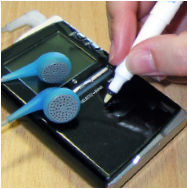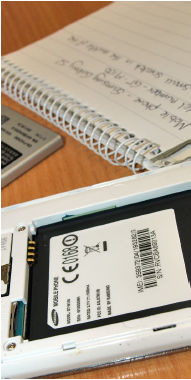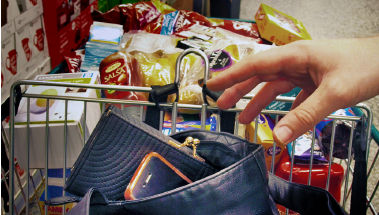Property marking
Items such as laptops, games consoles, MP3 players and mobile phones can be easily stolen and quickly passed on.
Security-marking your property could help to deter thieves as well as increase the chance of the police being able to return your items if they are lost or stolen.
Security mark your valuables
There are a number of different ways of marking your valuables, including:

- Ultra violet (UV) or invisible marking – UV pens put an invisible mark on your property that can only be seen under a UV lamp. Permanent UV marker pens are available from most stationery or hardware shops.
- Damage marking – Garden equipment, heavy electrical items and power tools can be marked with a painted sign, making them easier to identify and deterring thieves. However, this type of marking may reduce the resale value of the item.
- Engraving or etching – Both methods are suitable for many hard surfaces and can be done using an electric engraving tool or hand engraver.
- Ceramic marking – Ceramic marking pens are designed to mark china, glass or glazed surfaces. They do not cut or scratch the surface but do leave a permanent mark.
- Forensic marking solutions – These harmless solutions are invisible to the naked eye but contain a unique forensic code (like a fingerprint) that remains on the marked item, clothes or skin, making it easier to trace stolen goods or offenders back to specific crimes or locations.
- Specialist marking (high-value items) – Marking items like jewellery or antiques can be difficult and could reduce their value. Ask at a good quality jewellers or antique shop for advice on security-marking these kinds of items.
Remember
- When security-marking your valuables, always include information that will identify you as the owner, for example your postcode followed by your house number or initials of your house name.
- Choose an area on the item that is not often handled so that the marking doesn’t fade, for example the back of a games console or inside your mobile phone underneath the battery.
Keep a record of valuable items

- Make a note of expensive items including the make, model, serial numbers and any details that may help identify items if lost or stolen. Keep receipts somewhere safe in case you need them.
- Photograph your valuables including any items that you do not want to security-mark, paying special attention to any distinguishing marks such as initials or crests. Photographs should be taken against a plain background and include a ruler to give an idea of size/scale.
- Register your property – consider registering items on a property database such as immobilise.com, which can work with the police to trace owners of lost/recovered stolen property.
- Accurate and detailed information about stolen items can help the police to:
- identify your property and return it to you
- make sure thieves are prosecuted
- help insurance claims progress smoothly.
Get insured
- If you have home contents insurance you know that stolen belongings can be replaced, however an insurance claim will never compensate for the loss of items of sentimental value.
- There are many home contents insurers on the market offering different levels of cover and affordability.
Top tips to keep your valuables safe
- At home, avoid leaving keys or other valuables on display near windows or doors.
- When you go out, only take with you what you need – leave valuables at home.
- When out and about, keep valuables out of view (for example in a zipped pocket) and spread them around your person.
- Use a purse chain if you can.
- If you have a bag, keep it fastened and to the front of your body where you can see it.
- Never leave your belongings unattended or in easy reach, for example on the top of a pram, a shopping trolley or a mobility scooter.
